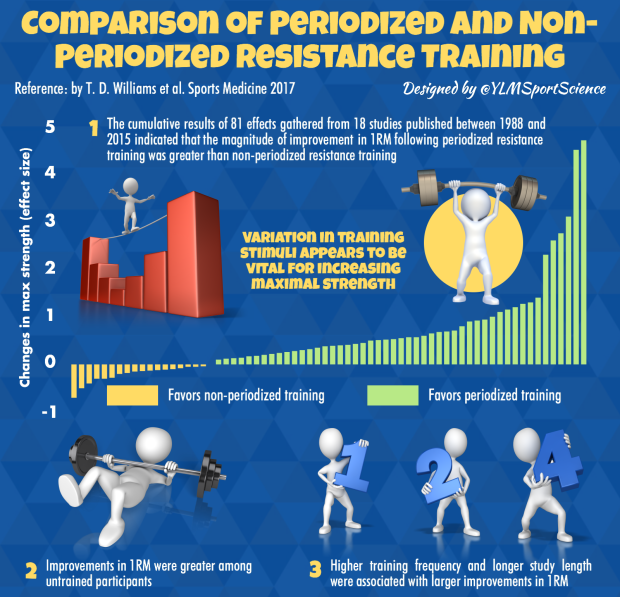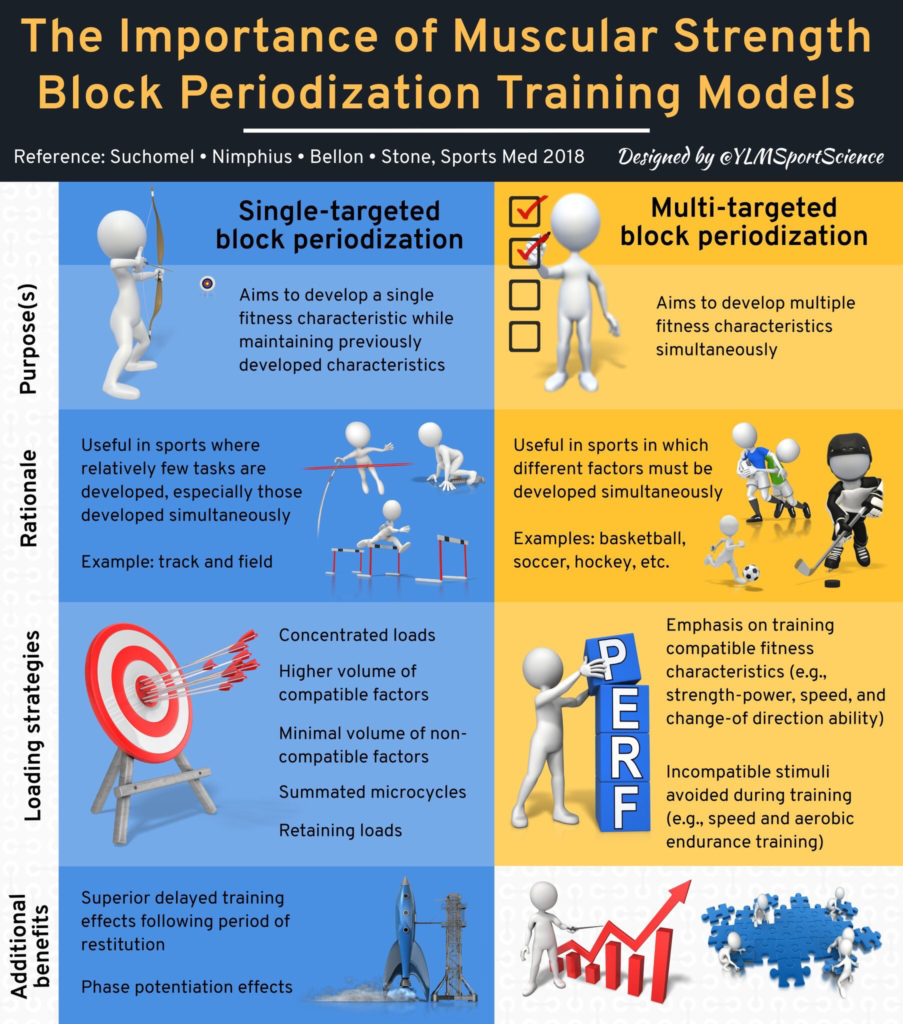Periodisation is the division of a training year (macrocycles) into smaller and more manageable intervals (mesocycles) with the goal of managing and coordinating all aspects of training to bring an athlete to peak performance at the most important competition or managing performance across a long in-season.
Periodisation is one way for the sports physiotherapist to approach the design of resistance training programs. It is the planned manipulation of training variables (load, sets, and repetitions) in order to maximize training adaptations and to prevent the onset of overtraining syndrome
- Periodisation is simply a process of dividing the annual training plan into a series of manageable phases (mesocycles).
- Each phase can then target a specific or series of attributes to be developed within a designated period of time.
- Periods of appropriate overload and recovery are designated within each phase.
- For the neuromuscular system to adapt maximally to the training load or stress, volume and intensity alterations are necessary.
- Periodisation must be individualised!!
“The goal with periodization is to maximize your gains while also reducing your risk of injury and the staleness of the protocol over the long term.”
For the neuromuscular system to adapt maximally to the training load or stress, volume and intensity alterations are necessary.
It also addresses peak performance for competition or meets. Periodization, if appropriately arranged, can peak the athlete multiple times over a competitive season (Olympic weightlifting, powerlifting, track and field) or optimize an athlete’s performance over an entire competitive season like with soccer or basketball.
Periodisation explained:
- Manage fatigue
- Reduce risk of over-training
- Managing load, intensity
- Recovery
Example of a Periodisation principles for a rowing program
Periodisation in Strength and Conditioning by Greg Huff:

Click here for the full article
Infographic: ylmsportscience.com
- Based on changing exercise volume and load across (microcycle, mesocycle and macrocycle) predictable, distinct blocks of timeframes
- It usually follows a progression of phases through ROM, strength, power, and speed.
- It requires completion of the previous phase, reaching specific milestones
Advantages:
- Predictable training variables allowing the patient to progress independent home exercise
- Step wise progression of training parameters
Disadvantages:
- The athlete may not maintain specific training parameters once they have moved to the next phase i.e. losing strength when moving to endurance training
- Volume and load are altered frequently (weekly to bi-weekly) to allow neuromuscular recovery
Advantages:
- May lead to better neuromuscular adaptations
- Allows for better manipulation of training variables based on recovery
- Several training variables can be addressed at the same time
Disadvantages:
- The athlete may not be able to complete power-based movements if strength has not been achieved
- Each training variable may not have sufficient stimulus to improve that paramater



